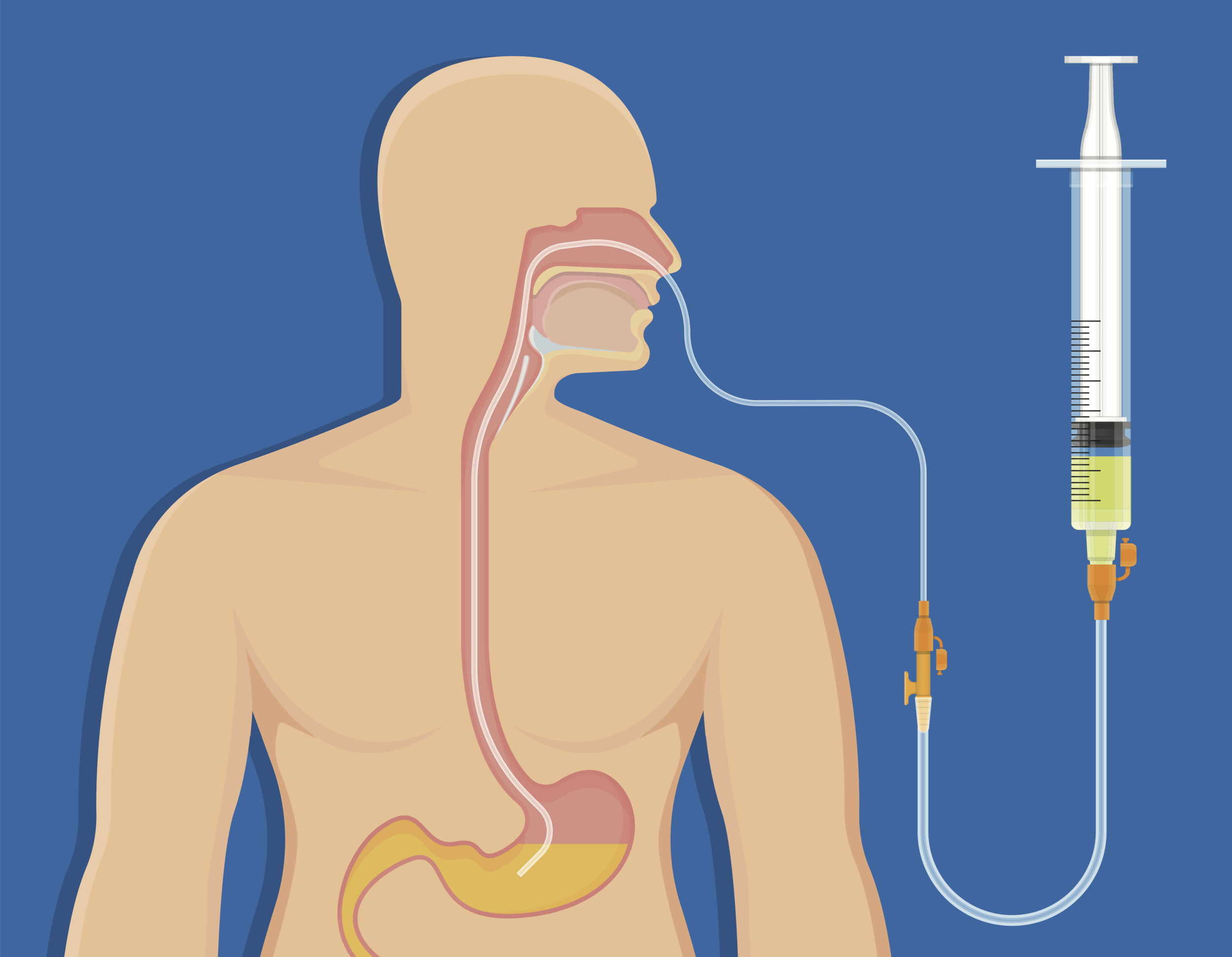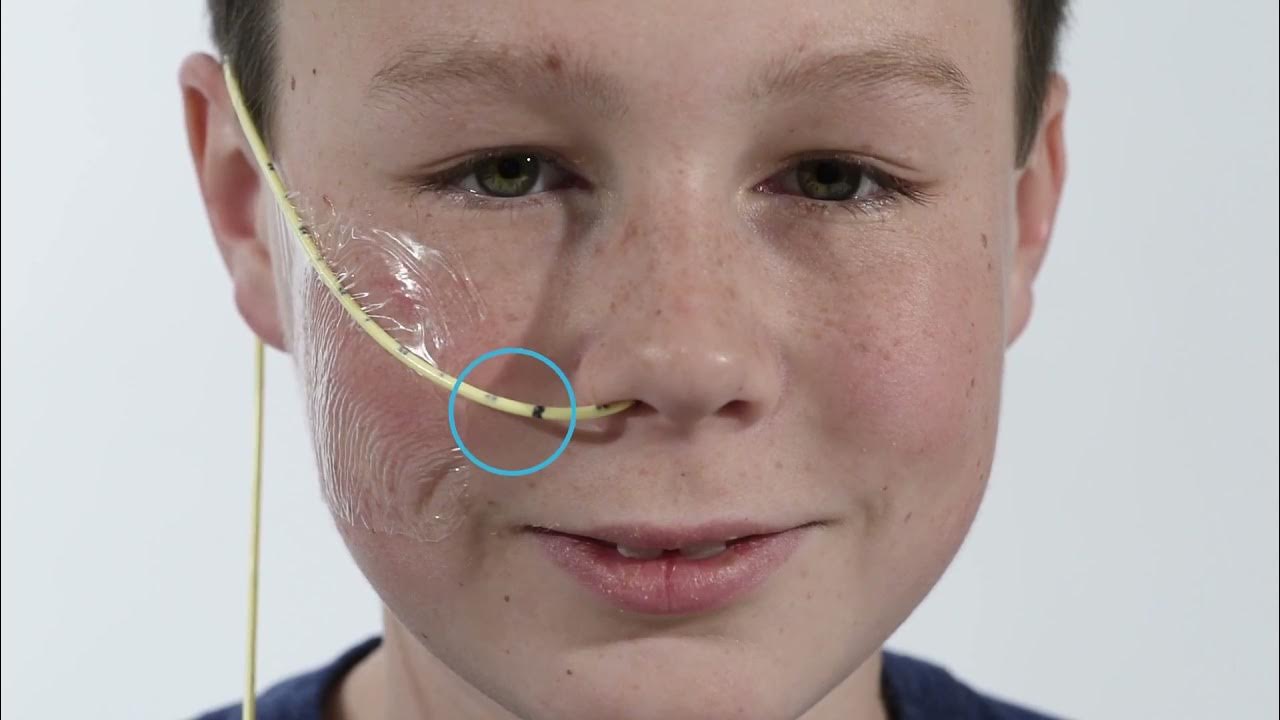An NG tube, or nasogastric tube, is a flexible tube that is inserted through the nose, down the esophagus, and into the stomach. It's used for various medical purposes including feeding patients who can’t eat by mouth, administering medication, and draining stomach contents. If you’re new to this procedure, you might feel a little apprehensive. Don’t worry! This simple guide will break down the essential steps you need to follow to safely and effectively pass an NG tube. Plus, we've included Dailymotion video instructions to help reinforce what you learn here.
Importance of Proper NG Tube Insertion

Getting the NG tube insertion right is crucial for several reasons, and understanding its importance cannot be overstated. Let's dive into why proper insertion matters so much:
- Patient Safety: The most important reason for proper NG tube insertion is patient safety. Incorrect placement can lead to serious complications such as aspiration, which occurs when stomach contents enter the lungs, potentially causing pneumonia.
- Efficacy: A properly placed NG tube ensures that medication, nutrition, or other therapies are delivered where they need to go. If the tube is in the wrong position, it won’t fulfill its intended purpose.
- Comfort: An NG tube can be uncomfortable, so ensuring that it is correctly placed can help minimize discomfort for the patient. Misplacement can cause irritation or even injury to the nasal passages and throat.
- Hygiene: Proper insertion technique helps maintain hygiene. A clean and correct procedure decreases the risk of infection, which is critical in healthcare settings.
- Confidence: For healthcare providers, mastering the proper technique increases confidence in administering care. With practice, you'll find that inserting an NG tube becomes a routine part of patient management.
In summary, ensuring that you understand and practice the correct steps for NG tube insertion can enhance patient safety, comfort, and overall treatment efficacy. Now, let’s move on to the step-by-step instructions video that will give you a clearer picture of the process!
Also Read This: Easy Tutorials to Recover Your Dailymotion Account
3. Required Materials for NG Tube Insertion

Before you begin the process of inserting a nasogastric (NG) tube, it’s essential to gather all necessary materials to ensure a smooth and safe procedure. Having everything on hand not only makes the process more efficient but also helps in reducing anxiety for both the patient and the caregiver. Here’s a list of what you’ll need:
- NG Tube: Choose an appropriately sized NG tube. Sizes typically range from 8-18 French.
- Water-Based Lubricant: This helps to ease the insertion process.
- Syringe: A 60 mL syringe is ideal for administering medications or feeding through the NG tube.
- pH Strips: Useful for confirming placement of the NG tube.
- Stethoscope: Used to assess correct placement post-insertion.
- Markers: For marking the measurement on the tube to indicate proper depth.
- Gauze or Tissues: To manage any secretions or spills during the process.
- Adhesive Tape: For securing the tube after placement.
- Gloves: Ensure you wear disposable gloves for hygiene purposes.
Collecting these materials before you start will help make the procedure as comfortable and straightforward as possible. And don’t forget, if you're ever feeling unsure about your process, always refer to instructional videos or consult a medical professional!
Also Read This: Creating a Unique Avatar for Your Dailymotion Profile
4. Step-by-Step Instructions for Passing an NG Tube
Passing an NG tube can seem daunting at first, but with practice and following the right steps, it becomes a manageable procedure. Here’s a step-by-step guide to help you through the process:
- Preparation: Gather all your materials and wash your hands thoroughly. Put on your disposable gloves.
- Position the Patient: Sit the patient upright at a 45-degree angle. This position aids in minimizing discomfort and ensuring easier access to the nasal passage.
- Measure the Tube: Measure from the tip of the patient’s nose to the earlobe and then down to the xiphoid process (bottom of the sternum). Mark the tube at this point with a marker.
- Lubricate the Tube: Apply a generous amount of water-based lubricant to the first 5-10 cm of the NG tube. This will help the tube glide in more easily.
- Insert the Tube: Gently insert the tube into one of the patient’s nostrils, aiming for the back of the throat. Do this slowly and encourage the patient to swallow to assist the tube’s progress.
- Advance the Tube: Continue to gently push the tube while monitoring the patient’s reaction. Look for signs of distress or discomfort.
- Confirm Placement: Once the tube has been pushed to the marked depth, check for placement using a syringe to draw back gastric content or by using pH strips. Additionally, listen for air with a stethoscope.
- Secure the Tube: Use tape to secure the tube to the patient’s nose to prevent movement, then document the procedure for future reference.
And there you have it! Following these steps ensures that you get it right and comfortably support your patient’s needs. For more visual guidance, check out our Dailymotion video instructions to make the process even clearer.
Also Read This: Mastering the Smokey Eye Makeup Technique with Dailymotion Video Tips
Tips for a Successful NG Tube Placement
Placing a nasogastric (NG) tube can seem daunting, but with the right approach and preparation, you can ensure a smoother process. Here are some valuable tips to consider:
- Gather Your Supplies: Before you start, make sure you have all the necessary items within reach. This includes the NG tube, lubricant, tape, a syringe for air aspiration, a pH test strip, a marker, and a towel.
- Get the Patient Comfortable: Comfort is key! Ensure the patient is sitting upright at about a 30 to 45-degree angle. This not only makes the process easier but also reduces the risk of aspiration.
- Use Proper Technique: When inserting the tube, always insert it into the nasal passage that appears more open. Gently guide the tube along the anatomical pathway, encouraging the patient to swallow – this aids in smooth passage down the esophagus.
- Check Placement: After insertion, don’t skip the all-important step of confirming placement. You can do this via aspiration of gastric contents or using a pH test. Always trust your instincts if something feels off!
- Provide Clear Instructions: Communication is vital. Explain each step to the patient to reduce anxiety, making the procedure more effective for both of you.
- Document the Procedure: Ensure to document the size of the tube, insertion depth, and any difficulties encountered. This helps inform future care and provides insights into the procedure.
By following these tips, you'll not only enhance your skills in NG tube placement but also ensure a more comfortable experience for your patient.
Also Read This: How to Turn Off the Age Gate on Dailymotion Across All Devices
Common Mistakes to Avoid
Even experienced practitioners can make mistakes when placing an NG tube. Recognizing potential pitfalls can help improve your technique. Here are some common errors to be mindful of:
| Mistake | Consequences | Prevention |
|---|---|---|
| Not Assessing Nasal Passages | Increased discomfort and potential nasal injury. | Always check both nostrils and use the one that is more patent. |
| Inserting the Tube Too Forcefully | Risk of perforation or other trauma. | Use a gentle approach and allow the patient to swallow. |
| Neglecting to Confirm Placement | Potential for aspiration and other complications. | Always check placement with aspiration or pH testing. |
| Ignoring Patient Feedback | Increased anxiety and discomfort for the patient. | Pay attention to the patient's cues and provide reassurance. |
| Failing to Document Properly | Impacts future patient care and continuity. | Always document the procedure thoroughly. |
Being aware of these common mistakes and how to avoid them can greatly enhance your NG tube placement skills. Remember, practice makes perfect, but always prioritize the safety and comfort of your patient!
Simple Guide to Passing an NG Tube with Dailymotion Video Instructions
Passing a nasogastric (NG) tube can be a straightforward procedure when performed correctly. It involves inserting a tube through the nose, down the esophagus, and into the stomach. The NG tube is commonly used for feeding, medication administration, or draining stomach contents. Follow this simple guide to ensure a safe and effective NG tube placement, supported by helpful video instructions available on Dailymotion.
Preparation
- Gather Necessary Supplies:
- NG tube
- Water-based lubricant
- Gloves
- Syringe for air verification
- pH indicator strips (optional)
- Stethoscope
- Patient Positioning: Position the patient in a comfortable, upright position (30-45 degrees) to facilitate tube insertion.
Insertion Steps
- *Measure the Tube: Measure the length from the nose to the ear and then down to the xiphoid process to determine the correct tube length.
- Lubricate the Tube: Apply a water-based lubricant to the tip of the NG tube.
- Insert the Tube: Gently insert the tube into the patient's nostril, directing it backward and downward.
- Advance the Tube: Continue advancing the tube while asking the patient to swallow to aid the process.
- Confirm Placement*: Use a syringe to inject air into the tube while listening for gastric sounds, or measure the pH of the aspirate.
For visual guidance, check out our linked Dailymotion video, which demonstrates the insertion process step-by-step.
Conclusion
In conclusion, passing an NG tube is a skill that can be learned through practice and guidance. With the right preparation, technique, and resources, you can perform this procedure with confidence.
Additional Resources
- Dailymotion Video Instructions - Visual step-by-step guidelines
- Nursing World - Comprehensive articles on NG tube management
- Mayo Clinic - Official procedures and guidelines for NG tube placement
 admin
admin








